Days Gone tech analysis: Bend Studios' Unreal world under the microscope
Sony developers using Epic's engine deliver a very different open world.
After more than seven years in development, Days Gone has finally arrived, delivering Bend Studio's take on the zombie apocalypse. It's a large-scale open world experience with a heavy focus on narrative and characters. To boil things down to their essentials, it's basically The Last of Us meets Far Cry and it works.
It starts with the environment. Days Gone features an impressive take on the Pacific Northwest, with richly detailed conifer forests and open plains serving as the backdrop. The scenery has a decidedly unique feel as a result of this setting, and it's backed by a highly impressive dynamic weather and time of day system, amongst many other features. Bend also takes the road less traveled when it comes to its technology backend, with an approach that differs from most of Sony's acclaimed first-party studios.
Perhaps that's not so surprising though.The release of Days Gone marks a return to home console development for Bend Studio and as its first original IP since the late 90s, Days Gone represents a major shift for the company. For nearly a decade, Bend has focused on creating high-end portable experiences for Sony's handheld consoles. This includes an impressive third-person sequel to the Resistance series crafted specifically for PlayStation Portable as well as a mobile installment in the Uncharted franchise, launched alongside the ill-fated PlayStation Vita.
Beyond the change in platform, however, Days Gone differs on the engine side. While most first-party studios within Sony have focused on home grown, in-house technology, Bend has opted to build Days Gone utilising Epic's very powerful Unreal Engine 4 - possibly a first for a major Sony first-party studio. It also presents an interesting challenge for the team and technology alike. This is a massive open world environment rivaling the density of a Far Cry game with traversal both on-foot and on-bike. While Unreal has proven very capable of delivering large scale games, there aren't many examples quite like Days Gone - and the results are fascinating.
For starters, the end product is generally solid on both PlayStation 4 and the PS4 Pro. On the enhanced machine, Days Gone appears to use a form of checkerboard rendering to reach an effective pixel count of 3840x2160 but the implementation, while impressive, isn't completely without flaws. While most scenes exhibit clean, aliasing free edges that do deliver a good 4K experience, there are other areas where you may spot double width pixels as a result of this implementation.
On the base PS4, the resolution drops to native 1080p like most first-party titles. Thanks to Unreal's temporal anti-aliasing solution, both versions appear extremely clean, yet soft in motion.There is no evidence we could find of dynamic resolution scaling, but it's always a possibility in games like this, and Sony has referred to it in the past as 'dynamic 4K' - though this is a term it has also applied to other fixed resolution checkerboard games, like Horizon Zero Dawn and God of War.
Aside from resolution, both versions appear very similar in terms of overall visual quality but there are some minor enhancements visible on the Pro. This primarily manifests in terms of further refined shadow detail on the Pro - mainly visible in areas of foliage but can also be observed elsewhere. Everything is just a bit more refined on the Pro, basically, but it looks great on both systems as is usually the case with first-party releases. No matter which platform you play it on, however, Days Gone looks great.
In terms of performance, though, testing right now is still in its early days as patch 1.03 - said to include base PS4 improvements - only arrived recently. However, based on initial impressions, the Pro delivers a mostly locked 30fps with consistent frame-pacing and only very occasional, mostly minor slowdown. It's not a perfect turn-out, but even a Horde onslaught delivers a level, sustained 30fps. The base PS4 is good overall, but can struggle more in some scenarios - bike rides through the open world can see frame-rate stutter, and scenes heavy in alpha effects also take their toll. By and large though, it's still fine - and the quality of the open world is much the same on both systems.
And this is of crucial importance. Situated in Bend, Oregon, the development team is based in an area dissimilar from most other game studios and it's clear that this has served as an inspiration for the game. There is a density and atmosphere to the environment that is rather captivating and unique. It starts at the lowest level with impressive environment and terrain detail rendering. The physically-based materials are of exceptional quality, perfectly capturing the essence of dirt, mud and moss across the forest floor. Individual plants are spread liberally across the environment and vary based on the region. Richly detailed foliage lines the forest floor while wispy grass is found across the outer plains. Other objects throughout the world are equally detailed with fine texture work on both natural and manmade objects alike.




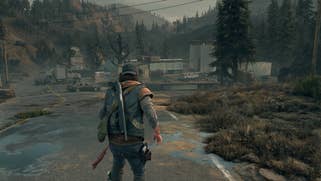

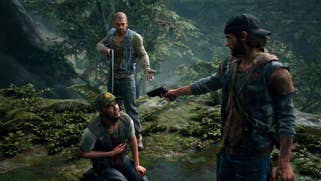

The abandoned 'Nero' facilities feel suitably high-tech but it's the building interiors that really stand out. I appreciate how random buildings throughout the world all tell a story thanks to careful design. It's not just empty rooms like a battle royale game - Days Gone has care and attention placed into the design of each of them. This helps ground the world, delivering a place that feels as if it were once lived in. The atmosphere is greatly enhanced by the variety and quality of its environment. And it also feels suitably abandoned. Thick layers of dirt and dust are applied to stationery objects peppered across the world further enhancing the sense of ruin.
This is further enhanced by impressively robust shadows -Days Gone appears to use a form of screen-space shadows to allow for finely traced shadow detail from small objects, right down to the smallest clumps of foliage or the stones strewn across the ground. I'm surprised and impressed by the implementation here - it's not a new technique but Bend Studio makes extensive use of it, and it's not just used for fine environment shading.
Dynamic lights, such as the flashlight beam, also display shadows using screen-space information - though this can highlight one of its flaws.When the source from which the shadow should be cast is occluded, the shadow disappears and you may also notice shadows disappearing around the edges of the screen. So it's not perfect, but it's an interesting solution to this problem and allows for generally finer detail and more shadows in general. Ambient occlusion is also well implemented ensuring realistic ambient shadowing.
All of this combines to create a sense of depth in the world that is quite impressive to behold, but this is particularly enhanced thanks to the dynamic weather system. Thunderstorms can appear dynamically during gameplay and the result is striking. A wind system is used to increase foliage movement resulting in plants and trees whipping violently around you. Move into an open plain during a storm and even the far-off conifers sway in the storm, while moving into the office creates an often remarkable spectacle.
The variable rain density looks great and rain particles are lit by dynamic lights, while a wet shader is also used to give the impression of water soaking into clothing and the environment. Then there are the reflections. Screen-space reflections are deployed on both bodies of waters such as lakes and rivers as well as in puddles spread across the environment. SSR is used on various other surfaces as well when the material calls for it. As SSR relates to water, though, this highlights one complaint with the presentation - water rendering is hit or miss. Shallow streams realistically simulate the reflection and refraction but none of this water reacts naturally to player movement, so it often feels as if you're intersecting the water plane which is a little strange. It's a nitpick, but something I noticed. What is impressive though is how water surfaces react to conditions - a helicopter with its rotor running disturbs a nearby lake, for example.
Another important element of the visual pipeline is lighting. Days Gone supports a real-time time of day change, while offering a range of indoor and outdoor environments. A form of volumetric lighting, likely the frustum voxel-aligned type, is used throughout the game enhancing the thick atmosphere of the world both in daytime and at night.I also appreciate the way in which volumetric lighting can interact with shadows while moving through darkened areas such as tunnels. In addition, an impressive height fog is also evident at points throughout the game. As for world lighting, I'm not entirely certain what method Bend has used here. The lighting is dynamic and shifts according to time of day, but I suspect a mix of real-time and baked lighting is used.
Days Gone also uses what appears to be a procedural sky system, perhaps using some sort of noise pattern to give the impression of dynamic, moving clouds. The clouds are designed to match the weather, so you'll have a mix of sunny days with clear skies mixed in with thick cloud cover and everything in between. The environment rendering is really solid overall. It's one of the more impressive examples we've seen of an Unreal-powered open world game and as Bend's first large scale home console project, the results are excellent.
Of course, there are some notable limitations to consider as well. While the game features a range of objects, such as gas cans, that react to fire and physics, most of the world is quite static in nature. You can't shoot at branches of trees or objects scattered around the world. Fire doesn't cause any burn damage and it doesn't spread like Far Cry. Physics are only applied to very specific objects as well. There are enough interactive elements in play, of course, but I feel that a slightly more interactive world overall would go a long way towards enhancing the level of immersion.
I say that because aspects of the game design remind me of Far Cry 2 - there are resources to manage, such as gasoline, and you have to worry about bike damage. Riding from one point to another on the map is a real journey and it requires resources, which is surprisingly engaging, but it lacks some of the nuance featured back in the now retro Far Cry 2. That's not to say the game systems aren't interesting to play with - getting stranded out on the road and being forced to scrounge for supplies to get your motorcycle running again results in some neat moments. In one case, after returning to my bike with gas, I ran into another human trying to strip parts from my bike which I promptly put a stop to. It was a scripted mission but little events like this are a nice touch.
Days Gone also places a strong emphasis on riding your bike - it's the primary method for traveling across the world and as such, it's important that it feels great to control. Thankfully, that's the case here: the physics system enables satisfyingly realistic handling as the bike bounces across the world while crossing different types of terrain. Sliding around corners or slicing through thick forests is surprisingly fun and almost reminds me of playing something like Motorstorm at times, especially once you get the nitro boost. You can upgrade your bike while playing too, further enhancing the experience.
The bike really is one of the game's most successful and interesting mechanics. It's fun to ride but its fragility plays a role in survival - you have to manage your bike well and it's surprisingly engaging but equally important to the experience are the characters and character rendering. Days Gone is an experience surprisingly heavy on narrative, with lots of real-time cutscenes and dialogue. It's a highlight for this game with great cinematic animation throughout.
The main character, Deacon, is also voice by Starkiller himself, Sam Witwer, who has great range and delivers a solid performance but it's the character rendering that is perhaps most interesting to us. Looking at the big picture, I feel that the team has gone a good job but Days Gone doesn't break any new ground. That said, there are some nice touches. Skin uses subsurface scattering both in cutscenes and during gameplay - something which becomes evident around light sources. In-game face and hair rendering is high-quality throughout but it's clothing that impresses the most. The physically-based materials really help convey the sensation of cloth, leather and the like with proper fresnel and fine texture detail. Deacon himself is impressively realised: his costume features plenty of bits and bobs that jostle realistically as you jog across the land, while inverse kinematics ensure that weight distribution appears natural while ascending or descending steep grades.
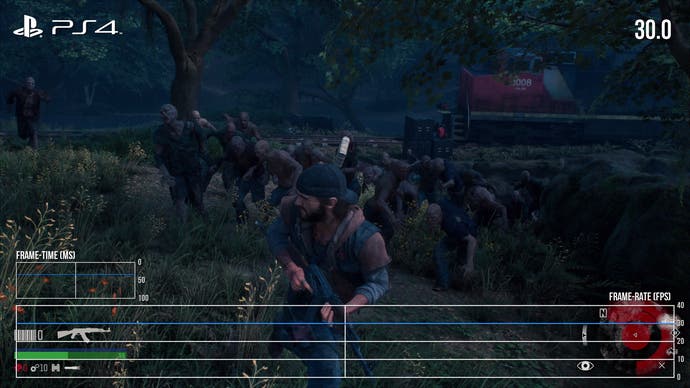
Games like Days Gone live or die by the quality of their combat and AI systems. There's a nice variety of foes to face with very different tactics and a nice mix between stealth and action. Sometimes it's just a few rippers or a handful of zombies but other times you might encounter the horde which is one of the game's defining features. This large ravenous pack of zombies can be found around the world and losing them is not an easy task but it's neat to see so many individual models flowing across the terrain without resulting in performance issues. Sometimes the AI can seem to act a little illogically though, with enemies seemingly 'stuck' in behaviours that don't match the context of the scene.
I enjoyed my time with Days Gone and the overall package is solid in terms of visual presentation. The world is large and detailed, lighting is natural, shadows are beautifully implemented bring welcome depth to the environment, characters are lovingly crafted, and the zombies are plentiful. But there's not quite the sense of extreme polish we've come to expect from Sony first-party releases, with some bugs and glitches, while base PlayStation 4 performance - despite the 1.03 patch - isn't on par with the Pro. Despite that, the overall experience is solid and it's an interesting and often beautiful game. While the zombie genre may be well worn at this point, the way in which Days Gone plays out feels sufficiently different and fresh enough to make it worthwhile.
Looking back over the games Bend Studio has developed over the years, Days Gone seems to be a culmination of everything it has worked towards. It features a mix of action and stealth not unlike the Syphon Filter games, with the grittiness of its Resistance game turned up a notch while expanding on the storytelling skills exhibited in Uncharted: Golden Abyss. This once tiny studio responsible for the creation of Bubsy 3D has grown and expanded into something much greater. Days Gone may have taken years to develop but it feels as if the studio has grown immensely - and it's a solid foundation on which to build its next (next-gen?) console game.







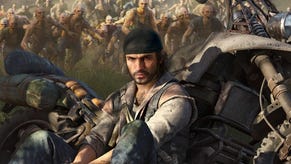

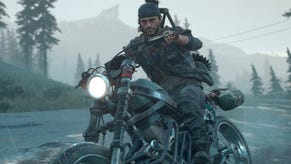









.png?width=291&height=164&fit=crop&quality=80&format=jpg&auto=webp)
